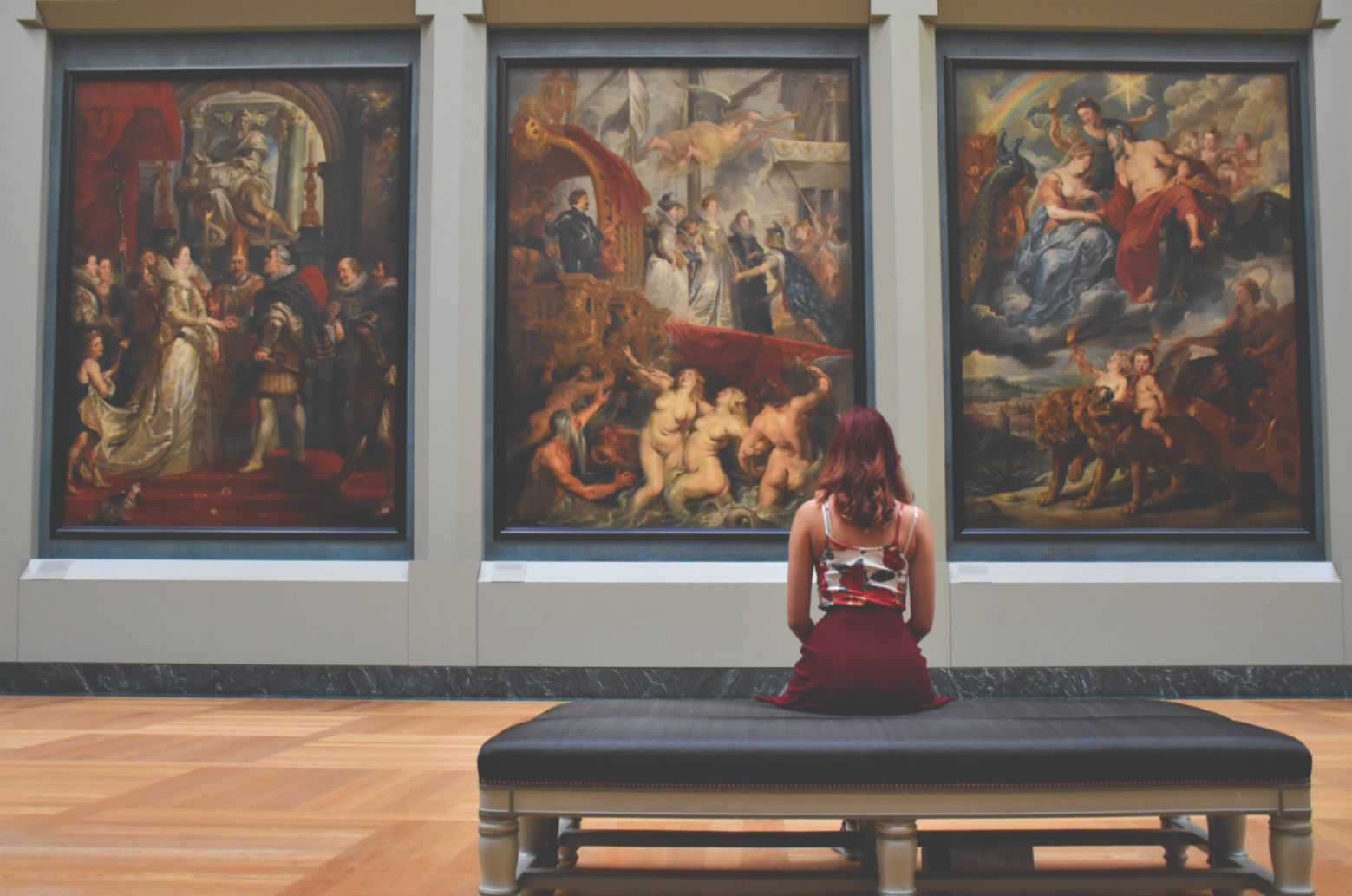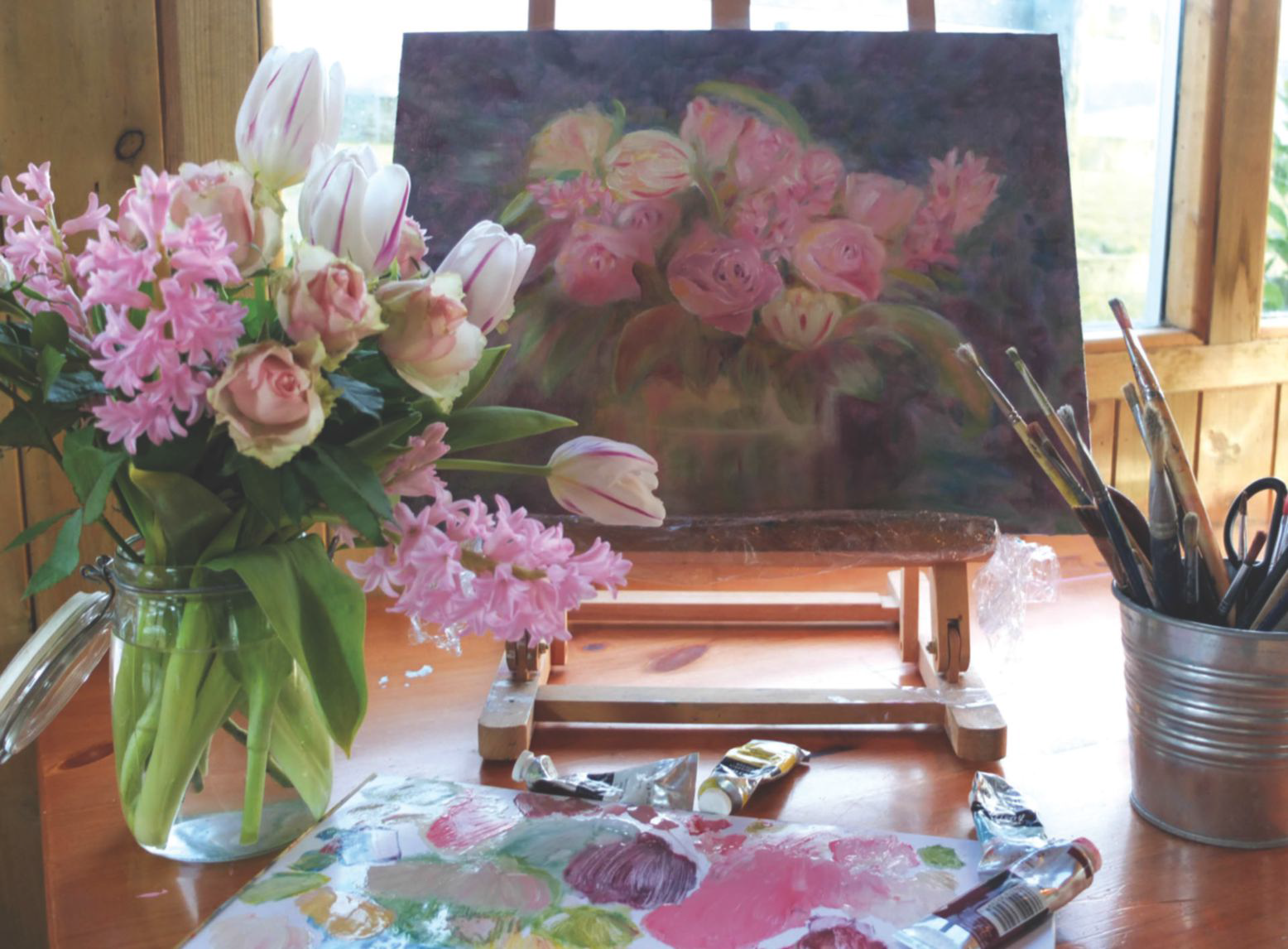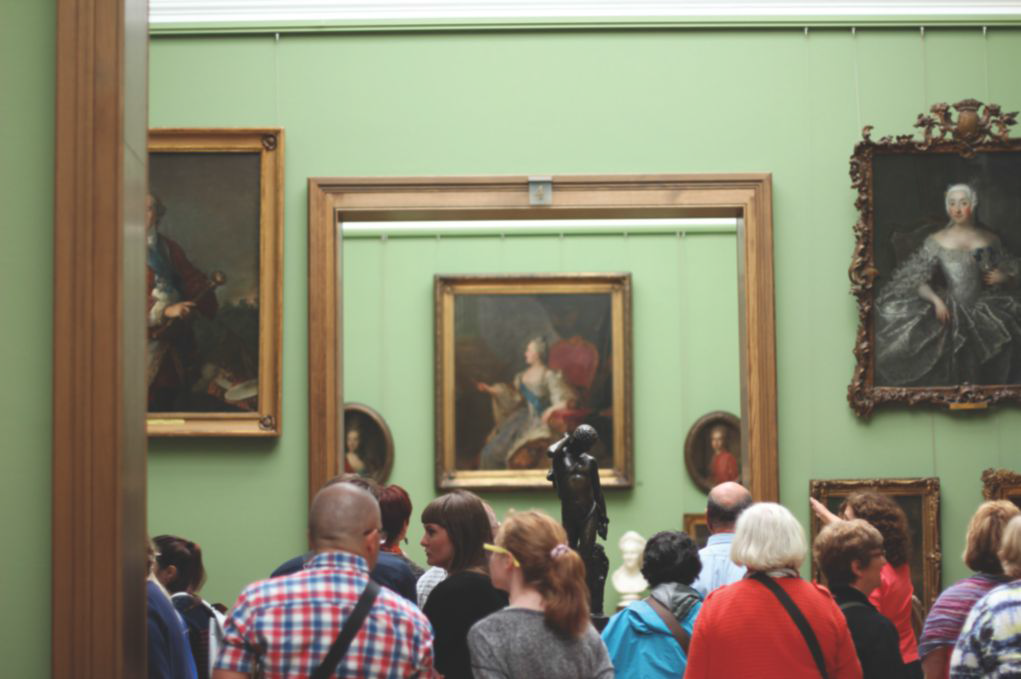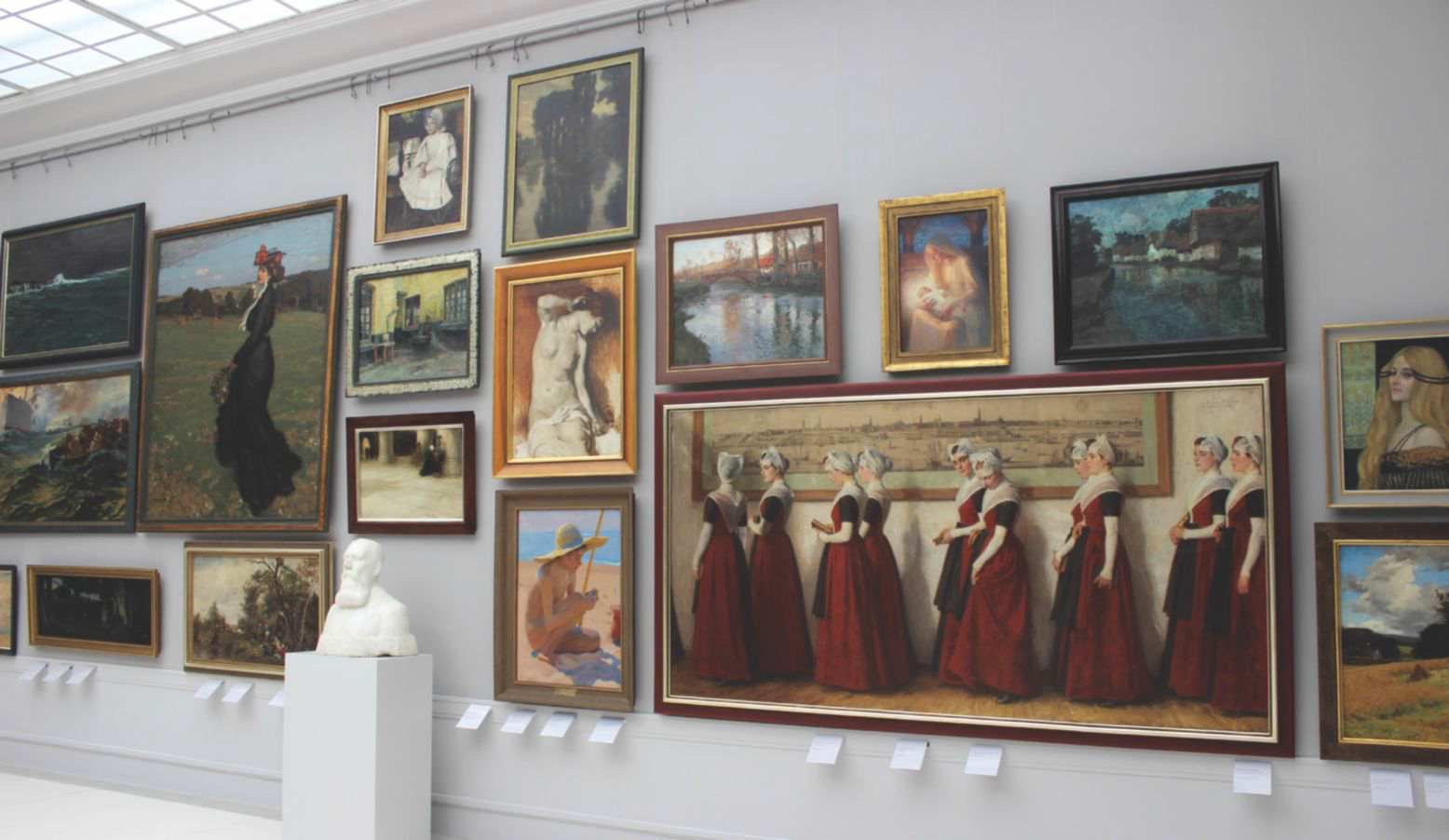What is Art Today?
Art had a strict formula throughout most of its history, before going through some major adjustments. It will never be the same again and has had the rug pulled out from under its easel. Lance Ross puts up the question of Art’s future…

Image Source
In the beginning
From cave paintings through the Middle Ages to the Classical period in the1700s, most artists aimed to make their work look as realistic as possible and employed a large amount of skilled techniques to achieve that result. The best gained fame. A few standouts are Rembrandt, Michelangelo, Leonardoda Vinci, Jan Vermeer and Caravaggio Some schools have the same aim today, with some going to extremes.
Recently in London I viewed the finalists in a UK portrait painting competition, and eventhough I had many decades’ experience of working with art and photography, close-up I could not tell that the winning painting was not a photograph. Manyart-for-artists-magazines’ competitionslean heavily towards awarding themost realistic paintings.
The Australian Guild of Realist Artists, most traditional art schools, and the bulk of art sold at suburban art shows still aim at variations of realism.
Creative adjustment
A welcome and highly recognised change of mode was Impressionism in the 1870s, with onet, van Gogh, Degas, Renoir, Cézanne and Manet being among the famous names. Another hapter was the Vienna Secession movement led by Gustav Klimpt. It took the conservative art elitists a long time to accept the imaginative creativity of Impressionism, so much so that Vincent van Gogh sold only one painting in his lifetime.
Yet, ironically, in 1990, Portrait of Dr. Gachet by Van Gogh sold for $82.5million. They told us that life wasn’t meant to be fair. Alan Bond bought Irises for $52.9 million, but never paid it off and it was resold to Getty Museum. Vincent was certainly a pioneer well ahead of his time.
Technical adjustment
Prior to photography, artists used various techniques to achieve accuracy apart from drawing from life. Vermeer used a camera obscura, others looked through glass marked with a grid, or a Lucida. Many today draw grids over reference then copy square by square.Images can be mirror-projected and traced, or enlarged on photocopiers.
Photography was invented in 1837, but was not easily available for artists until the early 1900s. Once photography made realism easier to achieve, abstract art accelerated.
Picasso became a great abstract painter after first studying academically. Pablo said, “The uglier my paintings get, the crazier people get about buying them.” He was the highest earning artist in the world.

Image Source
Favoured subjects come and go
At the same time, second in the world after Picasso for earnings, was the English marine artist Montague Dawson, who painted square-rigger after squarerigger sailing across the oceans and earned 100,000 British pounds per year.
Artists offered to pay him to stand alongside to witness his technique of painting the sea, but were refused. This was when the Cutty Sark and the Thermopylae were tea clipper merchant ships, and were followed in the way we glorify tennis players and race horses today.
Hero Australian artists of the heyday period of the late 1800s to the 1990s were the renowned Heidelberg School artists and others with similar styles who had discovered the appeal of the Australian bush and adopted a popular look that hung on most home and office walls throughout the land.
Among notables were Streeton, Withers, Lindsay, Johnson, Jackson, Heysen, Roberts and McCubbin. Their style is still a part of the traditional art today, but to a lesser degree. In 1985 this writer bought a Robert Johnson for $14,000, but when sold in 2007, it brought only
$4000 at the same auction house.
Fakes and takes
A photograph I saw showed workers in a Chinese factory copying famous European paintings to be exported and sold cheaply. Naturally that undermines sales of local original art. A man proudly showed me an “original oil painting” he bought in Asia, with a back view of a naked female. After studying it for a while, I realised how it was trickily faked.
The perfect purportedly ‘rendered,’ very smooth skin areas were a photograph, and the hair, background and bits and pieces were painted in oil paint over the photograph. No face, hands or feet were showing, making the faker’s task easier. Then that mix of photograph and oil paint was rephotographed, enlarged, and multiple photographic prints were able to be made. Next the whole area was hand coated with Dob-a-Glob (a gel that is thick and sets later) painted on to match brush strokes an artist would have used. I did not have the heart to tell him the truth.
And then came computers
The invention of digital photography and electronic editing has had a massive influence on the arts in general. The ability to create art digitally, anipulate it, publish it, print it to giant dimensions, and create almost anything you can imagine from postage stamps to science fiction movies, has sapped the need for artists to create art the old way.
This phenomenal leap forward has given everyone so much more to do in everyday life, depreciating time that could be spent on hobbies and pastimes.
‘Artist’s impressions’ of houses and apartments, created by skilled architects using CAD/CAM software on computer achieve such quality that the offered, as yet unbuilt accommodations, look like real life photography.

Image Source
At what price?
Unknown and little-known artists struggle to sell at prices sufficient to provide a good living. Famous name artists’ works soar into the stratosphere. But it is because of their fame, not directly the quality of their work.
Take the court case concerning the large paintings entitled Big Blue Lavender that sold for $2.5 million, and Orange Lavender Bay selling for $1.1 million because they were claimed to be by Brett Whiteley. Two years of court cases, with Brett’s widow Wendy who lived with him for 27 years saying they were not by Whiteley, but the court saying that it could not be proved that they were fakes, ended with the accused pair going free.
Whether Whiteley painted them or not they remain the same paintings. The Crown Prosecutor stated, “…well, Your Honour, they’re worth either $4 million or 4¢; we don’t know yet.” Famous name paintings with limited availability sell for the same reason that Marilyn Monroe’s ‘Happy Birthday’ dress which went for US$4.8 million, or Sir Donald Bradman’s old baggy green cap going for $425,000. In time the ‘Whiteley’ pair of paintings may finish up on eBay. The court may suggest one thing but the art world knows better.
Fooling the experts
Mark Rothko compared modern art to children’s art, and said that his art was “reformed by his study of the dramatic themes of myth.” At his show at the Guggenheim Gallery in 1945, his prices were $150 to $750. In 2012, his 1961 painting Orange, Red, Yellow sold by Christies in New York for $86.8 million.
Once I visited a gallery, stood in front of an unframed canvas 4m x 20cm, painted black all over and entitled Black Canvas. I thought, “What do they know that I don’t?” and have never discovered the answer.

Image Source
Now the good bit
Matthew Collings said, “It has become fashionable not to understand art.”
That is an exceptional understatement. Antiques, period homes, opera, symphony orchestras and classical traditional art from the past are now, in this modern world, appreciated by fewer people, but all remain highly loved and praised by the devotees of intrinsic quality in art.
Edgar Degas said, “Painting is easy when you don’t know how, but very difficult when you do” and “Art is not what you see, but what you make others see.” I believe that there is a eater diversity of good art styles today than ever before. Individual artists, art teachers, art societies, galleries, art magazines and books, and art exhibitions will thrive forever and will demonstrate and prove that our civilisation has a passion for culture which is a manifestation of humanintellectual achievement. Those who recognise this will carry on.
The even better bit
Mark Twain said that after food, shelter and security, we need something to do. And practicing art supplies that in spades with pencils, brushes, paint and imagination. Creating it is satisfying, engrossing and rewarding.
Is it good for you?
Yes. An American study published in Neurology magazine showed that people practicing art had very much less chance of developing dementia and memory loss. The study showed how these activities reduced the risk of mild cognitive impairment: pottery, quilting and sewing 45% less risk, computer use 53%, socializing 55%, and painting, drawing or sculpting provided 73% less risk of memory loss.








Comments